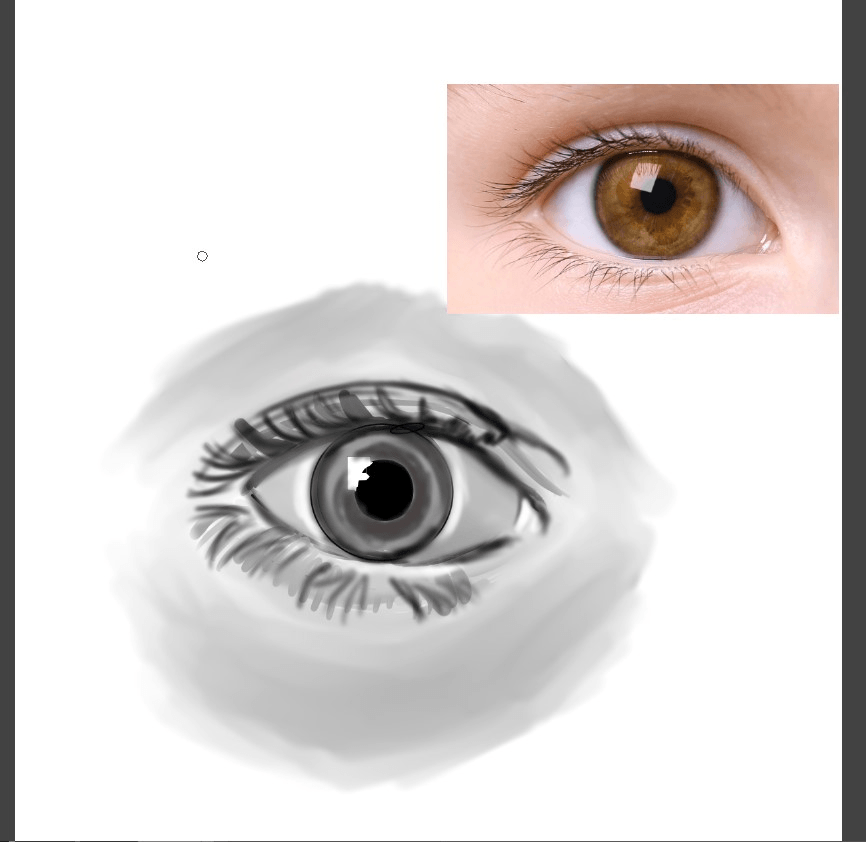6. Painting the Character: Skin & Hair
In this part, I’ll explain how I paint the character’s skin and hair.
[1] Painting the skin
This is very similar to how I paint other parts, but with the following differences.
Skin painting layers
① Base color, ② Multiply, ③ Multiply, ④ Multiply (dark shadows),
⑤ White highlights, ⑥ Eye whites, ⑦ Irises, ⑧ Color dodge
■ Line art on the face
I make the color lighter around the inner eyes, center of the mouth, and nose.
However, if all the lines are faint then the character loses some expression, so I leave some darker lines.
■ Shading
The skin is a focal point of the illustration, so I slightly increase the saturation of the shadows to create a more vibrant effect.
For darker shadows, I paint blue-toned shadows and reduce the saturation. (Step ④)
· Eyes
The eyes are the only part I don’t paint by stacking and masking fill layers. Instead, I paint directly on a single layer.
As I mentioned previously, I wanted to make the character look slightly unnatural, so I decided to make the eyes red to add a pop of color in the face.
[2] Painting the hair
I paint the hair in almost the same way as the skin and clothes. I use the following layers.
Hair painting layers
① Base color, ② Multiply, ③ Add color:
I’ll increase the brightness of the hair later in steps ⑧ and ⑨ with [Color dodge] layers, so I use a darker color for the base color and shadows.
Long hair can look a bit flat if the shading is all one color, so I add a gradient of a slightly different color (③).
Sometimes I also add a gradient on the base color.
④ Gradient + Multiply: In order to increase the depth of the color, I add some soft gradients in places to emphasize the movement of the hair.
⑤ Multiply 2: I add another darker level of shading to make the color richer.
⑥ Reflections: I lightly add this around the edges of the hair and at the tips, and lighten some of the color in the shadows.
I add the reflections in a slightly different color to add a new tone. (For example, if the hair is blue, I use purple or blue-green reflections.)
⑦ Reflections 2: I add reflections on the tips of the hair around the face. For the light reflected from the face, I use a color that has a little bit of the skin tone blended in, such as a brown if the hair is a warm tone, or a low-saturation blue if the hair is a cool tone.
⑧ Color dodge: This is the first color dodge layer. For most parts, not only the hair, I first paint with slightly dull colors, then use color dodge to brighten up the parts where the light hits.
⑨ Color dodge: This is the second color dodge layer. On this layer, I brighten up the hair in a smaller area than the first color dodge layer.
I use between one to four color dodge layers depending on what I’m painting. I typically use two layers.
When painting dark hair such a black or brown hair, I also add a highlight layer to make the hair look shinier.
Now I’ve finished painting the character.
In the next part, I’ll add some final touches to the character.
























Comment